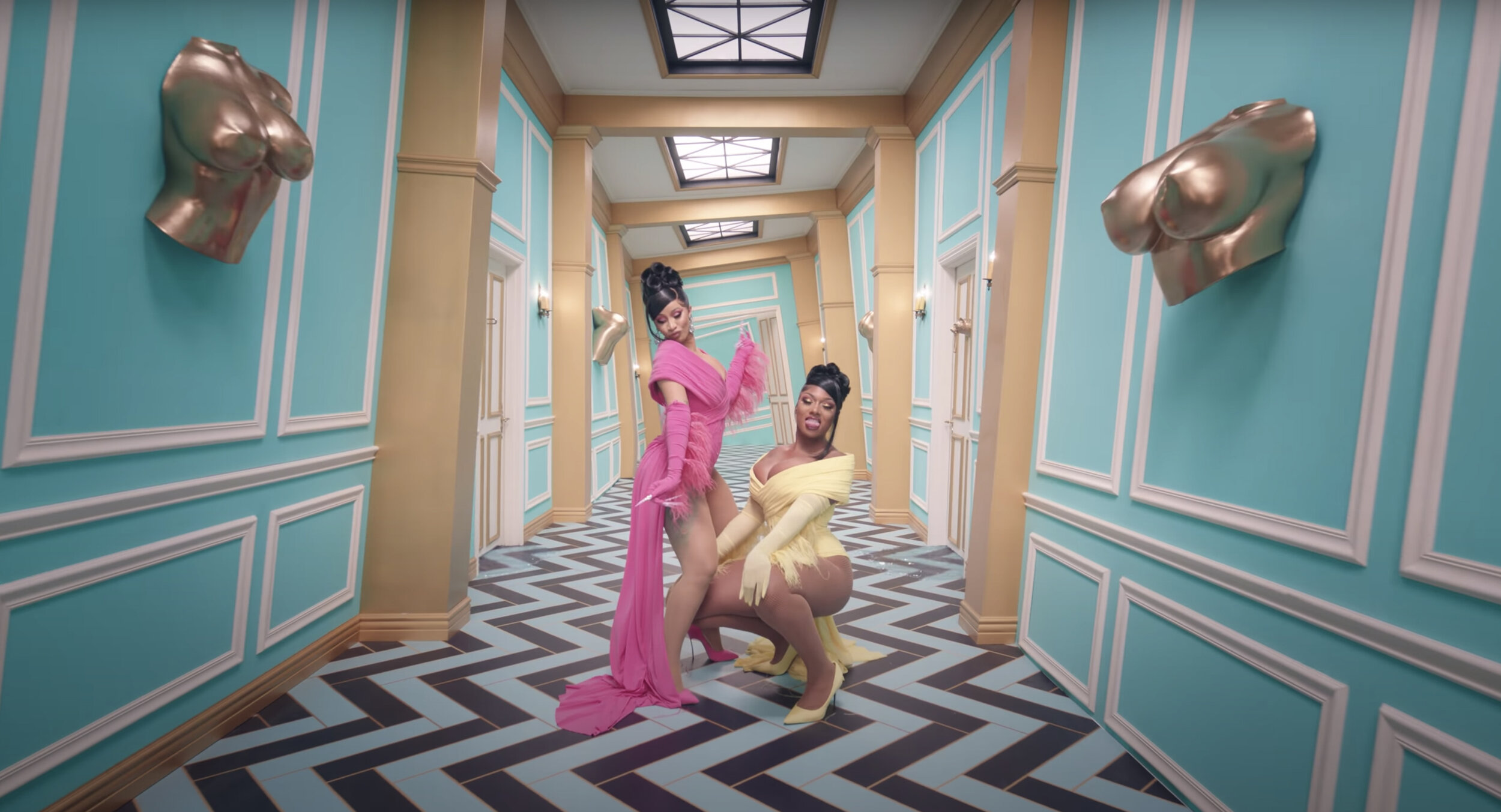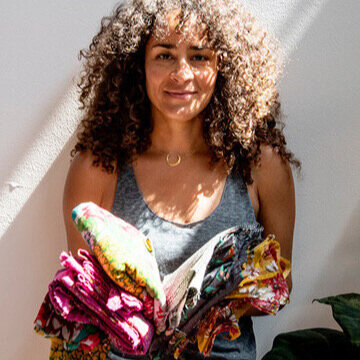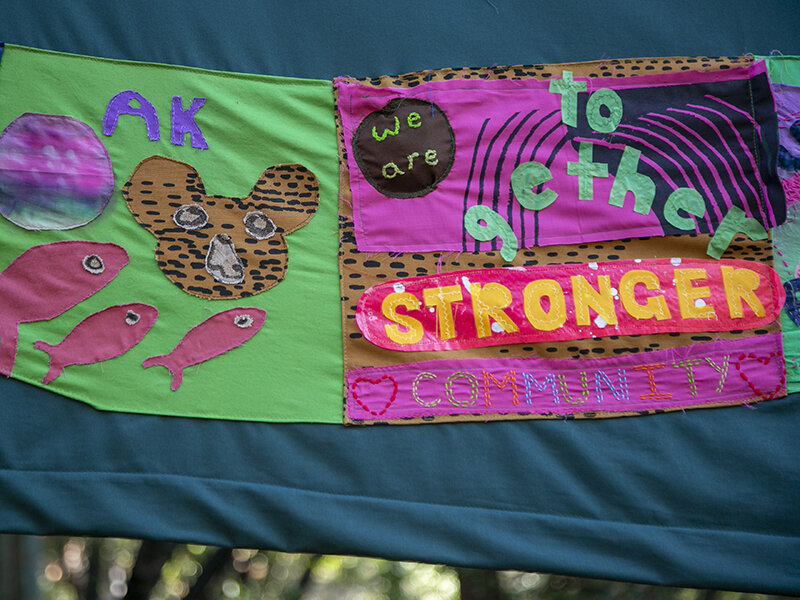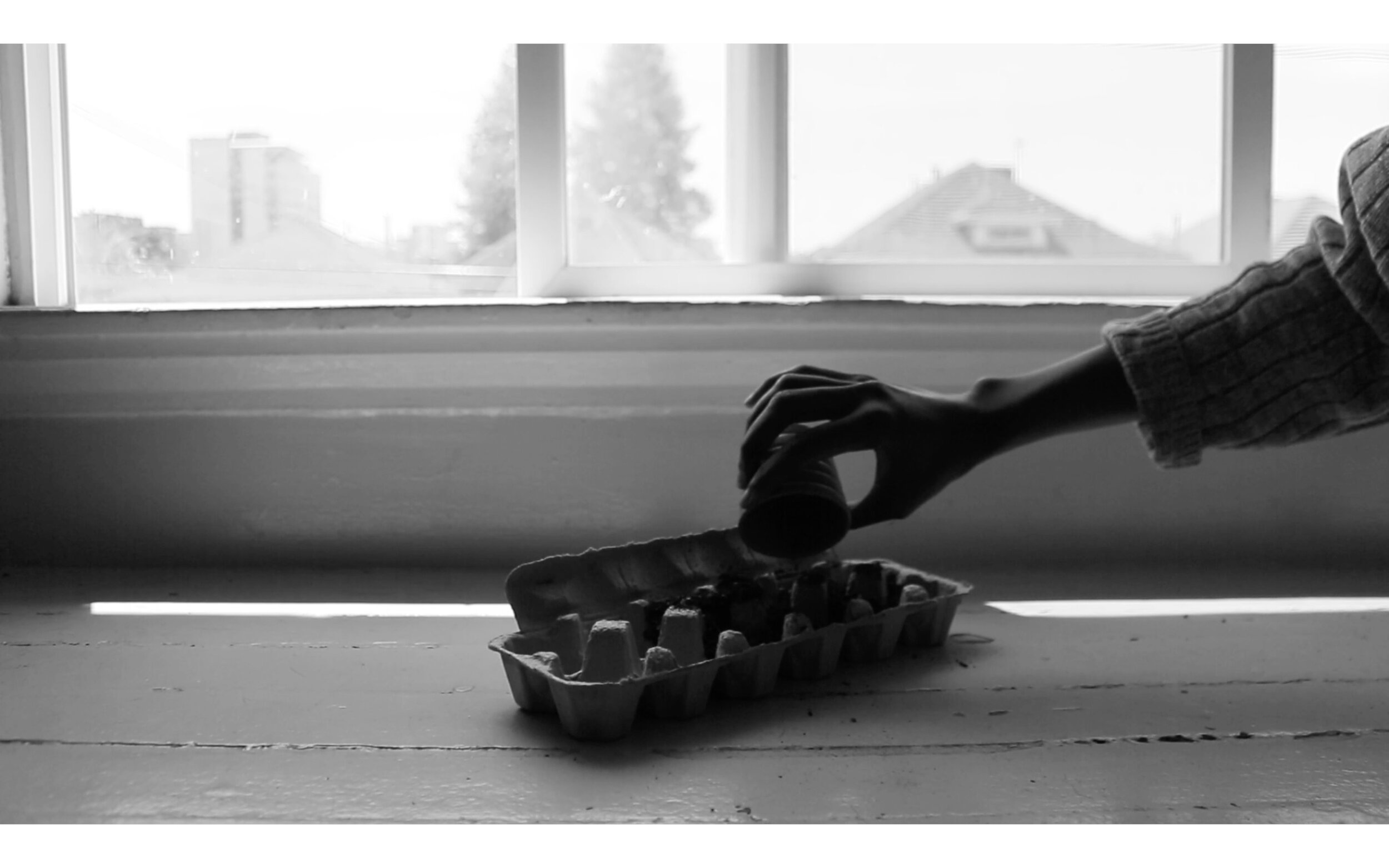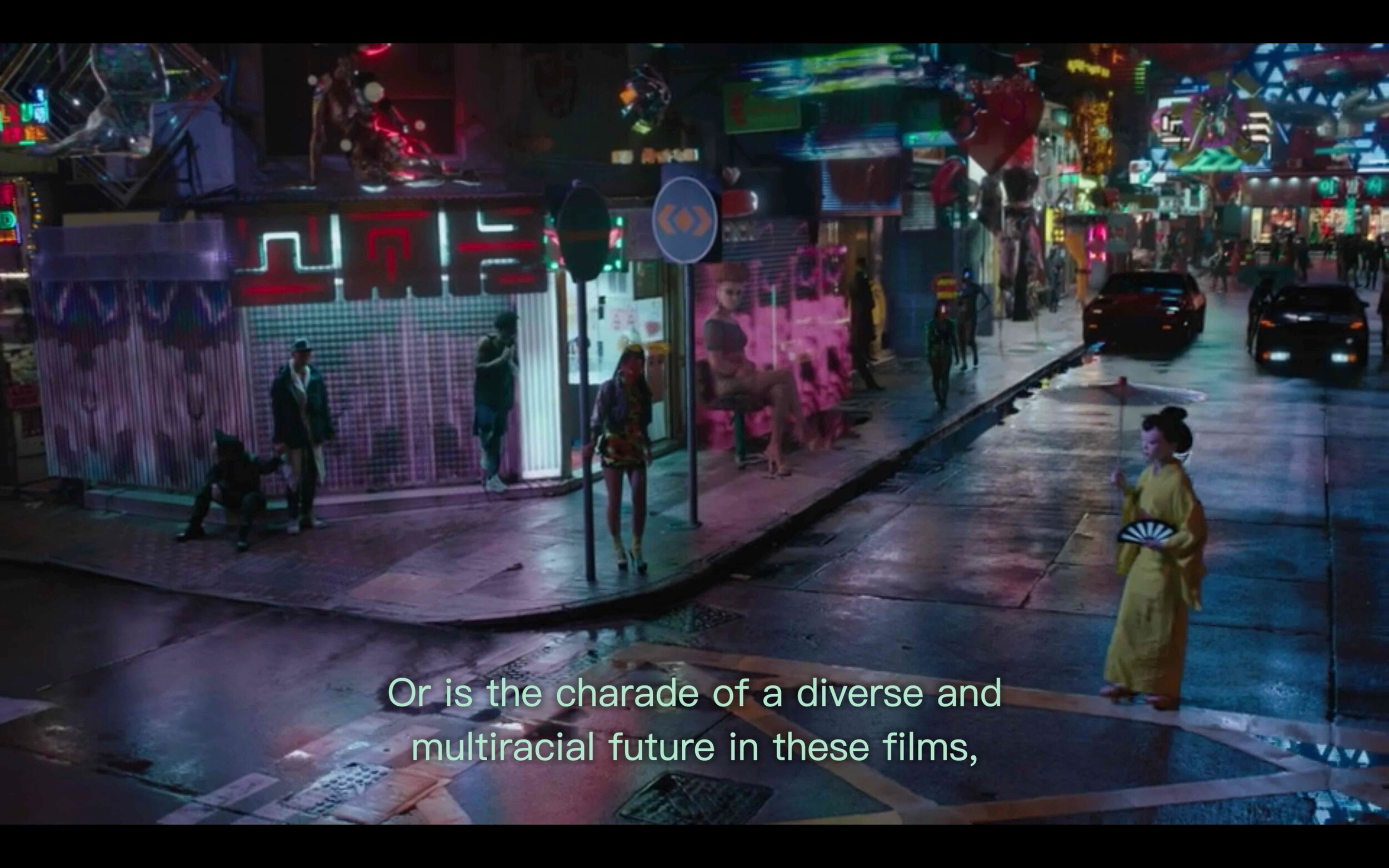WOMXN’S WORK & POWER OBJECTS:
25 Years After 10 x 10
Kimberley Acebo Arteche
Release Date: October 26, 2020
This essay is the first in an occasional series where we invite contemporary artists to connect art works from BAC’s fifty-plus-year history to the issues and concerns of today. It reflects on both the historical context and current meanings of past work, teasing out associations to politics, pop culture, and more along the way.
In 1995, the Berkeley Art Center, under the direction of Robbin Henderson, mounted a project entitled 10 x 10 : Ten Women / Ten Prints. It was both an exhibition and a serigraph portfolio in celebration of Women’s History Month and 75 years of women’s suffrage that included works by JUANA ALICIA, KIM ANNO, CLAUDIA BERNARDI, MILDRED HOWARD, HUNG LIU, YOLANDA M. LÓPEZ, RUTH MORGAN, MARY LOVELACE O’NEAL, FAITH RINGGOLD, and CARRIE MAE WEEMS.
Now, in my own artistic practice, I’m constantly investigating the stories and documents of our history that get buried over time. One conclusion that I’ve come to is that: artists have always been central to documenting history, especially when it comes to histories that don’t play into our country’s master narratives. In 2020, twenty-five years after this exhibition, I’m reflecting and inquiring on the relevance this exhibition has to today’s contemporary issues. But just like any other archival project, it’s a lot of disparate pictures and disparate stories together. Sometimes things make sense, and sometimes there are holes we need to critically fill in for ourselves. To do that, I did a bit of research on my own, and I also spoke with Robbin Henderson and Claudia Bernardi.
In 1995 when the exhibition opened, it was the 75th anniversary of women’s suffrage in the United States. Henderson describes her family’s history in the feminist movement, and how, 75 years later when this exhibition came out, these issues were still important. She wanted this exhibition to be a platform for these incredible women artists who deserved a captive audience. Many of the artists curated into this exhibition were at the beginning of gaining wider notice, like Mildred Howard and Hung Liu. Given the anniversary of suffrage, these artists were also asked to present their distinct intersectional frames for feminism. Many of these issues are the same issues our communities still struggle with today.
Women’s Work is Never Done by Yolanda M. López
In her screen print, López juxtaposes an image of Dolores Huerta from the 1965–70 Delano Grape Strike and Boycott with images of women farmworkers from a 1995 broccoli harvest. These women are wearing bandanas to protect their lungs from dust and pesticide. An almost eerie, premonitory peek into 2020, Latinx farm laborers are still working for less than minimum wage amidst a pandemic and fires without being provided with sufficient PPE, all while figuring out how to facilitate their children’s online schooling. Womxn’s work will never be done in our patriarchal society. The Bay Area loves to celebrate the history of the United Farm Workers; San Francisco even has Cesar Chavez Street that runs all the way from Third to Guerrero, various elementary schools named after him, and celebrates Cesar Chavez Day on March 31. But are all of these transactional tributes just for show? The fight for livable wages and workers’ rights still has a steep climb, especially for immigrant womxn.
When we talk about relevance to 2020, we also need to discuss printmaking as a format. A beautiful thing about printmaking is that, for its time, it had the ability to produce and disseminate images at a voluminous pace (much like the dissemination of activist memes on Twitter and Instagram today). In the medium’s history, we honor the great printmaking centers in the Bay Area like La Raza Silkscreen Center, SOMArts, Kearny Street Workshop, and Kala Art Institute, which use screen-printing as a vehicle for revolutionary art and activism. For these reasons, we’d be remiss to ignore the comparison between printmaking and contemporary internet culture. While internet and meme culture has its pitfalls, when equipped with a grounded sense of critical thinking, it has so much to share with us.
In August 2020, artists Cardi B and Megan Thee Stallion released their hit song “WAP,” a banger of lyrical genius centered on celebrating their sexual power and expression set to the background of 1993 B’more club hit “Whores in this House” by Frank Ski. Their liberated expressions of sexuality and female eroticism didn’t come without critique. Black womxn presenting sexuality on their own terms in 2020? Misogynoir was rampant across many communities after this release. Twitter scholars came quickly to their defense:
Back to the contemporary relevance of the 10x10 exhibition: How could we ignore Faith Ringgold’s Jo Baker’s Birthday?
Jo Baker’s Birthday by Faith Ringgold
Cardi B & Megan Thee Stallion in the video for “WAP”
Celebrated for how she broke through ceilings of Black visibility in American and international performance stages, Josephine Baker was a dancer, actress, and political activist. Along with her active involvement in the American Civil Rights Movement, she was a symbol for women’s sexual liberation — and specifically a symbol of Black women that defied strata of class. Ringgold portrays Baker reclining on a bed, in an environment of opulence, much like Cardi B & Megan Thee Stallion throughout their “WAP” video. Forty-five years after her passing, I surmise Jo Baker would stan for Cardi & Megan. I can’t specifically speak to Ringgold’s intentions with this print, or whether she’d agree about my comparisons between Jo Baker’s Birthday and “WAP”, but we can and should attest to the need to continue to uplift the empowerment of Black womxn and Black youth in America.
Percenda by Ruth Morgan
Our school districts are still grappling with the deep inequities within the educational system, and any progress that was made in the last 25 years has been easily rolled back by current Secretary of Education Betsy DeVos through steady defunding and direct policy attacks. The school-to-prison pipeline is still alive, and the United States still hasn’t realized that schools cannot be a primary provider of stability and care in young people’s lives or that the actual answer to safety and success for marginalized youth is secure housing, ending food insecurity, paying working parents a living wage, and doing the deep anti-racist work in our education and healthcare systems that is long overdue. Ruth Morgan’s print Percenda pushes us to confront these normalized and overlooked truths through her photographic documentation of systematically oppressed youth and incarcerated peoples.
Ser Mujer Es Saber Resistir by Claudia Bernardi
In continuing to piece together the different narratives from this exhibition, I spoke with Claudia Bernardi, an incredible educator at CCA who taught Arts & Activism for years. We spoke at length about her life of activism through Argentina’s Dirty War and how that activism was adjacent to art-making.
In our discussion, she gave me more insight into her print Ser Mujer Es Saber Resistir and her experience at exhumation sites in Ethiopia. She related the exhumation process to printmaking and working with master printmaker JOS SANCES, who worked directly with each artist to produce the portfolio of prints in the exhibition. Each layer of color in this print may obscure or reveal different images, much like uncovering archaeological digs. Bernardi describes the process as akin to translating poetry: Some words and phrases may have direct translations, and some poetics may be buried underneath the layers. The title of Bernardi’s print translates to: “To be a woman is to know how to resist.” This phrase, she mentioned, is one that was passed down from the matriarchs in her family — a piece of wisdom and power that did not get buried through her family’s history.
In my development of this essay, I found that much of the process was similar to Bernardi’s exhumation experiences: revealing each layer one by one. Objects or nuggets unearthed in the process may not have full stories, yet they hold sacred and powerful energy.
I’m not trained as a historian. But, I will say that in my own practice of working with image archives, we are never fully afforded the whole story. In my conversations with Robbin and Claudia, I wove together different stories in the process of figuring out how to approach this project. This piecing together of narratives pays a reflection to our relationship with history and oppression in this country, much like how Claudia described layers working within printmaking and excavation. There will always be layers of each story for us to uncover. Historical amnesia is real: We forget the struggles that happened in our communities five, 10, and 15 years ago. When we disengage with our histories and herstories, details and stories get buried. Our elder generations remind us to keep these stories alive.
When I asked Bernardi and Henderson about their advice for us as a rising generation of artist-activists, Bernardi reminded us to understand power: what we are experiencing is only the tip of the iceberg. Although our beloved Bay Area is so incredible at showing up to march and fight, the power of change is not sustainable without the change of legislation. Henderson noted that the energy of elder activist generations was easily wiped by policies getting rolled back when pressure was not continuously placed after initial fights were won. Her advice: Keep eternal vigilance.
While the issues included in this 1995 exhibition are still being fought for, we also have to remember that these curatorial themes are not exhaustive. In the spirit of reflecting on movements toward empowerment and liberation, we always need to ask ourselves, “Whose voices are missing?” The feminist movement has made great strides, and there is still so much we need to do to advocate for our trans, disabled, Indigenous, immigrant, undocumented, and incarcerated siblings. These prints are not just documents of history; they are objects of power. Power that should not be forgotten. Power that we should remind ourselves of often, and power that reminds us not to lose track of where we need to keep fighting.
ARTIST BIO
KIMBERLEY ACEBO ARTECHE (she/they) is an educator, cultural worker, and interdisciplinary artist. Her work explores the hybrid cultures formed by technology, movements of immigrants in America, and the way movements through space and spaces has been affected by these two.
Arteche received her BFA from the University of Maryland, Baltimore County, and MFA from San Francisco State University where she received the School of Art’s Distinguished Graduate award. She has been awarded the Murphy Cadogan Contemporary Art Award by the San Francisco Foundation, was Kearny Street Workshop’s Featured Visual Artist in the 2015 APAture Festival, and residencies at the Vermont Studio Center and the Growlery. She has shown at East Tennessee State University, SOMArts Cultural Center and at the Wailoa Arts & Cultural Center in Hilo, Hawaii.
Part of the Digital Exhibition “The Option To…”
Berkeley Art Center presents a series of newly commissioned projects by artists working in video, animation, writing, textiles, photography, and interactive media. As we continue to navigate a world of limited interaction, we commissioned six artists to make pieces that we could present online in some way. There was no thematic requirement, no overarching curatorial framework — just an opportunity to respond to our new shared reality with an idea that they saw as relevant to the continuation or expansion of their practice. For us, the value of these works is in the process of their making as much as in the thing that is made.
Their timing coincides with a yearlong initiative by the Feminist Art Coalition to draw attention to projects informed by various feminisms. New projects will be released every few weeks from October 2020 through February 2021.








